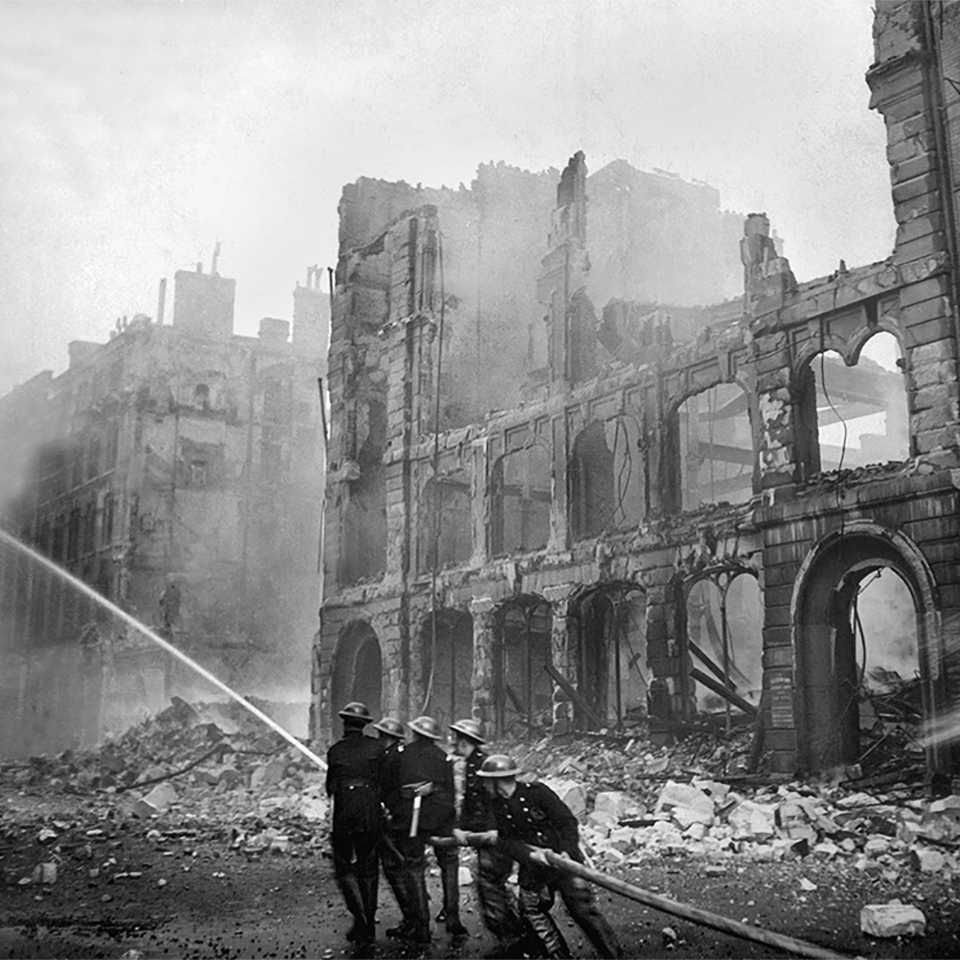

General article
Published in Edition 16
Insurance and War
A historical journey
Most insurance policies around the world exclude war-related damage by default, as such damage may prove too massive to insure.
The 20th century was a period of expansion and consolidation for insurance. It established itself as a fundamental component in a near-infinite number of economic sectors. But it was above all a time of profound political change which led to the greatest wars mankind had ever witnessed.
Through the hardships of the first half of the century, insurance companies, which had experienced notable growth by offering risk protection to individuals and companies, found themselves at a crossroads.
What should they do in the face of unprecedented destructive potential?
When the twentieth century began, the insurance sector had gained the most traction in commercial activities and general penetration in commodity transport, especially maritime transport. This is where insurers began to protect themselves against war-related risk and began to work with specific coverage for situations wherein damage or loss of ships had been caused by attacks from enemy states.
War risk is still a feature in marine lines. In these lines of business, purchasing war coverage is customary, although it involves specialist entities like GAREX, a syndicate MAPFRE forms a part of, and entails specific rules, terms, and usage.
However, other lines stopped working with war coverage decades ago. During the 1930s, major risks, such as war-related risks, were covered mostly in London, where major companies were already operating. Across other latitudes, this market was merely in its early stages. In 1938, the London market insurers, which had already defined measures to that end, agreed on a standard exclusion clause pertaining to war in non-marine lines. The rationale, which holds to this day, was that risks arising from armed conflict are simply too large to cover.
Clause NMA 464 excluded from coverage: “... loss or damage directly or indirectly occasioned by, happening through or in consequence of War, Invasion, Acts of Foreign Enemies, Hostilities (whether War be declared or not), Civil War, Rebellion, Revolution, Insurrection, Military or Usurped Power, or confiscation or nationalization or requisition or destruction of or damage to property by or under the order of any government or public or local authority.”
The date, 1938, is no accident. Europe had come to a critical moment of rampant militarism that would lead to World War II the following year. 1938 was the year Adolf Hitler launched his annexation policy, beginning in Austria and the Sudetenland, taking Poland next. The Spanish Civil War was also factored decisively into the decision process. The war had begun in 1936 and it was the first conflict to demonstrate the devastating effects of indiscriminate mass bombings that targeted military as well as civilian targets and could affect people for miles and miles. And not forgetting the political violence that accounted for a number of casualties and property damage. This phenomenon had antecedents in other countries and motivated an expansion of insurance exclusions.
The definition on NMA 464 does not stop at war. It introduces terms like rebellion, revolution, or insurrection, or confiscation ordered by governments. All of this speaks to the volatile circumstances of the time - interwar Europe saw numerous uprisings and violent rebellions.
The war exclusion clause attained international scope under the premise that war-related destruction could not be used to invoke insurers’ responsibilities. For decades, the greatest hurdle in policies that do cover such risk has stemmed from the fact that one cannot clearly establish the authorship/liability of an enemy military power or that damages do indeed arise from war or war-like conflict. Courts have in the meantime ruled on complex claims brought by multinational corporations that had suffered losses in countries at war.
There are a few curious cases. For example, two merchant vessels collided during WWI that were insured by a policy that excluded “risk of war.” Both ships sailed with their lights off in the middle of the night and one had gone off course hours earlier when a submarine threatened it. Was the damage ascribable to risk of war and, therefore, should it be excluded from coverage? The Supreme Court of the United States understood that it should not, making clear over a century ago that this matter is a crossroads where numerous lines of thinking intersect.
MAPFRE is a global insurer, Spanish market leader and the largest Spanish insurer in the world.
In 2021, it became the top insurer in Latin America and one of the top 6 in Europe for non-Life insurance based on underwritten premium. MAPFRE employs over 32,500 people and, in 2021, its earnings approached Euros 27,300m, posting net profits of Euros 765m.